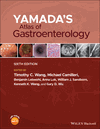Cystic diseases of the liver and biliary tract
Summary
This chapter offers diverse images that provide an overview on the cystic diseases of the liver and biliary tract and aims to provide a synopsis through pictures and illustrations rather than through text. Clinical presentation of biliary cysts depends on the patient's age. Diagnosis of biliary cysts requires a high index of suspicion. Percutaneous transhepatic cholangiography (PTC) and endoscopic retrograde cholangiopancreatography (ERCP) provide the most detailed exams. Magnetic resonance cholangiopancreatography is an attractive alternative to ERCP or PTC and shows the relationship of the cyst to the surrounding ductal system. Cholangiography is the best means of diagnosis. Biliary cysts are distinct from polycystic liver disease, which is a rare hepatobiliary fibropolycystic disorder characterized by the progressive development of fluid-filled biliary epithelial cysts in the liver that do not communicate with the biliary tree.



